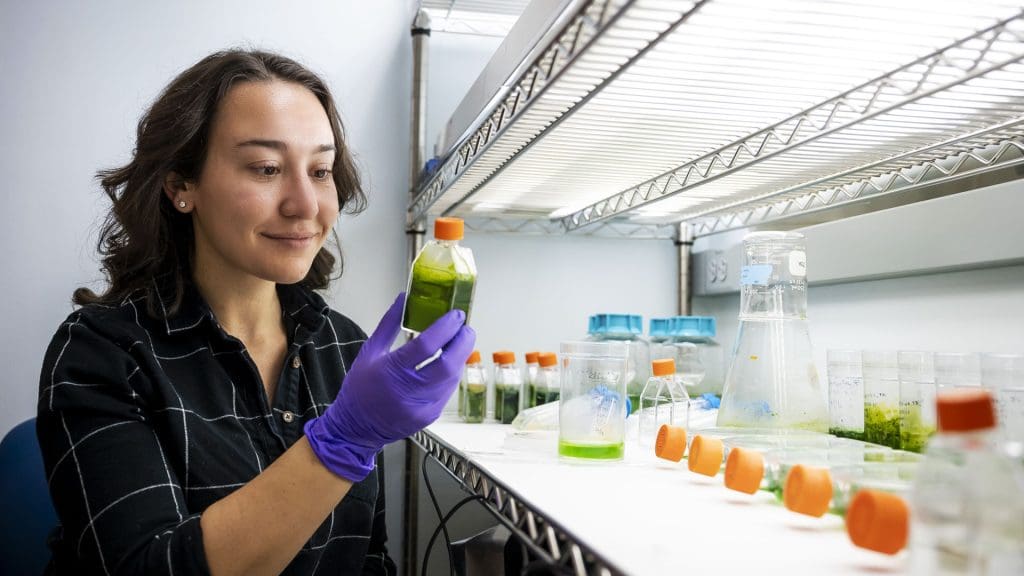
Postdoctoral fellow Isabel Baker examines a cyanobacteria sample in Jocelyne DiRuggiero’s lab.
To the average person, a rock is just a rock. But to biologist Jocelyne DiRuggiero and her Hopkins students, rocks are home to vital microorganism communities that could hold keys to how early life developed and how their evolution could help humans survive on other planets.
At the back of DiRuggiero’s lab in Levi Hall, there is a room full of little green bottles. In the bottles are cyanobacteria, vibrant microorganisms that grow via photosynthesis and produce energy for their microscopic community in the process. These particular cyanobacteria are special because they flourish in rocks from hyper-arid deserts, and because they were isolated almost entirely by students in DiRuggiero’s lab.
DiRuggiero, who has a joint appointment in the Morton K. Blaustein Department of Earth and Planetary Sciences, researches how the microorganism communities in rocks from places like Chile’s Atacama Desert react to different environmental stressors. The “cyanolab” grew out of one student’s curiosity. In 2015, then first-year student Micah Dailey decided to try to isolate the rocks’ cyanobacteria from the rocks’ larger microbial community. DiRuggiero was not sure it would work but supported his effort. He collaborated with a graduate student and after several months of testing cultures on windowsills, they succeeded.
“The [cyanobacteria] were the foundation of the community, and they could have some cool, unique features,” says Dailey, who is now a PhD student at Duke University. “It has really grown into something that I could not have predicted.”
A tiny tool
The cyanobacteria have turned out to be an important tool for the lab’s work. The collection has grown to more than 20 isolated strains from three deserts. More recent students sequenced the DNA of more than a dozen strains, uncovered the types of chlorophyll they use, and authored more than 10 papers. DiRuggiero and her students are currently examining the molecular mechanisms cyanobacteria use to acquire iron from rocks. All life on earth requires iron, and cyanobacteria need even more for photosynthesis.
“How can the bacteria get the nutrients they need when everything is solidly locked up in rocks?” asks Isabel Baker, a postdoctoral fellow in the lab. Understanding this transformation could give humans the biological tools to transform minerals ourselves, making it easier to survive in changing or extreme climates.
“This has important implications for establishing the limits of life on Earth, understanding how early life adapted to acquire nutrients from Earth’s surface, and for imagining what life on other dry, harsh planets—like Mars—could look like,” Baker says.
The next frontier
The lab’s current work is funded by the U.S. Air Force and U.S. Space Force, with long-term hopes of harvesting iron from minerals on another planet. “It’s this big, crazy idea,” DiRuggiero says. “But in the meantime, we need to understand the basic science.” DiRuggiero also hopes to find other materials cyanobacteria could purify and how carbon flows through the rocks. The more scientists can learn about the history and mechanisms of these microorganisms, the more use they may have in our future.




